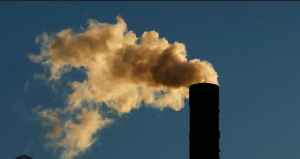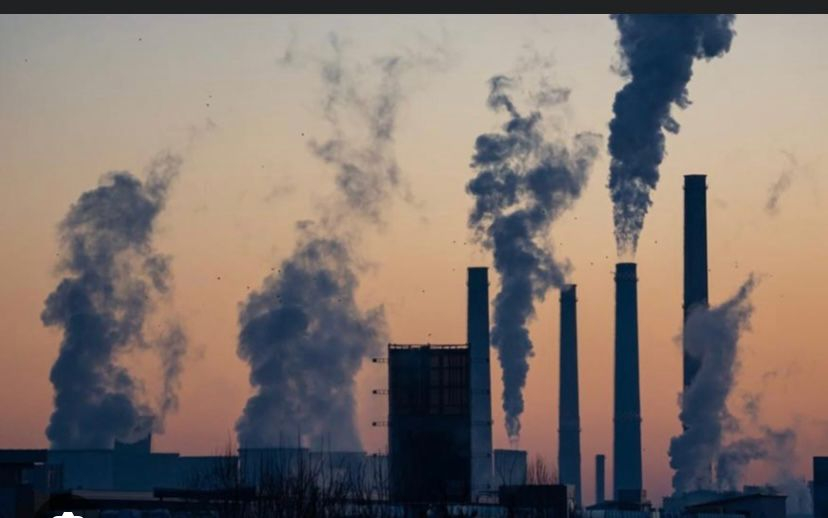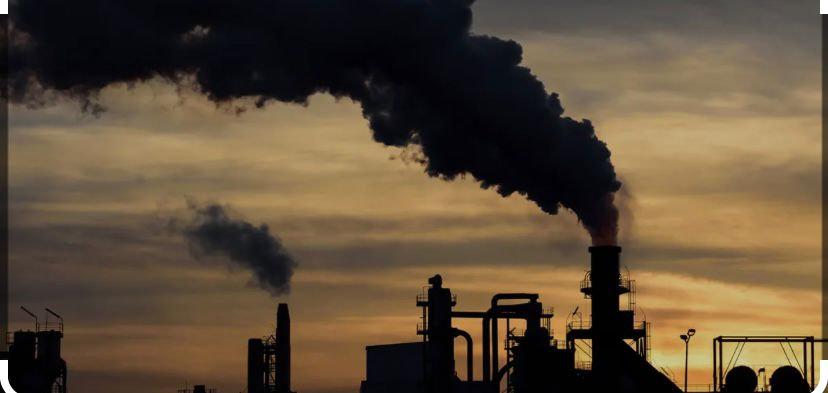


DC Kwame Kwakye Blog of Thursday, 31 October 2024
Source: KWAME KWAKYE
Carbon Emissions: The Engine Driving Climate Change

As the world grapples with the accelerating effects of climate change, the role of carbon emissions has come under intense scrutiny. Carbon dioxide (CO2), methane (CH4), and other greenhouse gases are the primary culprits behind global warming. Carbon emissions, especially from human activities such as burning fossil fuels, deforestation, and industrial processes, are causing significant disruptions to the Earth’s climate, with wide-reaching consequences.
Greenhouse gases like carbon dioxide trap heat in the Earth's atmosphere, creating the "greenhouse effect. As humans pump more CO2 into the atmosphere primarily by burning fossil fuels like coal, oil, and natural gas—the planet's temperature rises. According to the Intergovernmental Panel on Climate Change (IPCC), human-driven carbon emissions are responsible for more than 75% of global greenhouse gas emissions, making it the leading contributor to climate change.
The consequences of rising global temperatures are profound. The frequency and intensity of extreme weather events such as heatwaves, wildfires, floods, and hurricanes have increased, threatening lives, infrastructure, and economies. Additionally, melting ice caps, rising sea levels, and ocean acidification are impacting ecosystems and biodiversity.

Major Sources of Carbon Emissions

1. Fossil Fuels for Energy: Power generation is the largest source of carbon emissions, with coal-fired power plants and natural gas facilities responsible for much of the CO2 released into the atmosphere. Despite a global shift toward renewable energy, fossil fuels still account for a majority of the world’s electricity.
2. Transportation: Cars, planes, and ships are major emitters of CO2, as they primarily run on gasoline and diesel. The transportation sector alone accounts for around 15% of global carbon emissions, with numbers rising in regions with high vehicle ownership or poor public transportation systems.
3.Industry and Manufacturing: Industrial processes, including cement and steel production, contribute substantially to carbon emissions. Manufacturing facilities often rely on fossil fuels for energy and emit CO2 as a byproduct of chemical reactions.
4. Deforestation: Forests act as natural carbon sinks by absorbing CO2. However, deforestation—especially in tropical rainforests like the Amazon is reducing the planet's capacity to store carbon, while the act of clearing forests releases stored carbon back into the atmosphere.
5. Agriculture: Agricultural practices, including the use of synthetic fertilizers and livestock farming, contribute to methane emissions, another potent greenhouse gas. Cattle alone produce significant amounts of methane during digestion, making livestock a critical factor in global warming.
The most direct effect of carbon emissions is the increase in global temperatures. According to NASA, global temperatures have risen by about 1.1°C since the late 19th century, and the last decade has seen some of the hottest years on record.
As the planet warms, weather patterns are becoming more erratic. Heatwaves are becoming more frequent, while storms and floods are more intense due to increased moisture in the atmosphere. Wildfires are also becoming more widespread, fueled by hotter, drier conditions.
Melting polar ice caps and glaciers are contributing to rising sea levels, threatening coastal communities worldwide. Low-lying countries, such as Bangladesh and island nations in the Pacific, are particularly vulnerable to flooding and storm surges.
As carbon dioxide dissolves into the oceans, it reacts with water to form carbonic acid, leading to ocean acidification. This threatens marine life, particularly coral reefs and shellfish, which are vital for biodiversity and the global food chain.
As ecosystems change due to warming temperatures, many species struggle to adapt or migrate. This can lead to a loss of biodiversity, as species face extinction from habitat loss, changing climate conditions, or human pressures like deforestation and urbanization.
Solutions and Strategies to Reduce Carbon Emissions
Moving away from fossil fuels and investing in renewable energy sources like wind, solar, and hydroelectric power is critical. Renewable energy is already providing cleaner alternatives in many parts of the world, but it needs to be scaled up to meet growing energy demands.
Enhancing energy efficiency in homes, industries, and transportation can significantly reduce carbon emissions. Innovations in building design, energy-efficient appliances, and electric vehicles are helping to cut emissions while reducing costs.
Forests are vital for absorbing CO2 from the atmosphere. Efforts to restore degraded forests, prevent deforestation, and protect ecosystems can help mitigate carbon emissions. Programs such as reforestation and afforestation are being promoted as essential strategies in the fight against climate change.
Carbon Capture and Storage technologies capture carbon emissions from industrial sources and store them underground, preventing them from entering the atmosphere. While still in its early stages, CCS is being viewed as a promising solution for industries that cannot easily transition to zero-emission alternatives.
Governments are implementing carbon pricing mechanisms, such as carbon taxes or cap-and-trade systems, to incentivise companies to reduce their carbon footprints. By attaching a cost to carbon emissions, these policies encourage investment in cleaner technologies and greener practices.
Lastly, by reducing methane emissions from livestock and adopting sustainable farming practices can help lower emissions. Innovations such as precision agriculture, regenerative farming, and plant-based diets are critical to curbing agricultural emissions.
Addressing carbon emissions requires urgent global action. The Paris Agreement, signed by nearly 200 countries, aims to limit global temperature rise to below 2°C, with efforts to cap it at 1.5°C. Achieving this goal will require deep cuts in emissions, the rapid expansion of clean energy, and the adoption of sustainable practices across all sectors.
Governments, businesses, and individuals must act collectively to reduce carbon emissions and mitigate the worst impacts of climate change. While progress is being made, more aggressive action is needed to avoid the catastrophic consequences of a warming planet. Every ton of CO2 saved brings the world closer to a more sustainable, resilient future.
By Prince Agyei Opoku, Cape Coast


















